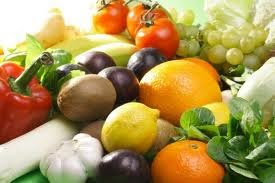 What Foods Cause Acne Breakouts?
What Foods Cause Acne Breakouts?by: Scott Patterson
The old adage, “you are what you eat” cannot be truer than when it comes to common causes of acne. Often individuals who do not consume a healthy diet or whose diet lacks the proper amount of critical vitamins and minerals suffer from acne problems.
Remember, you body must be healthy before your skin can be healthy, so strive to eat a well balanced diet, and dedicate yourself to an active lifestyle in order to enjoy unblemished, smooth, and glowing skin.
If you are experiencing skin problems, instead of treating your body’s largest organ with harsh chemicals or taking medications that may interfere with your other prescriptions, look first at the nutrition value of your current diet. Work to improve your skin and protect yourself from acne by following these guidelines.
Banish Fats, Oils, and Sugars
Often times, consuming a diet high in fats, oils, and sugars can wreck havoc on an individual’s skin. Just as these unsavory additions to your diet can cause other issues seen in your body, what you eat directly affects the quality of your skin.
Most people have experienced a break out after binging on junk food or fast food, most of which is high in fat, sugar, carbohydrates, and oils. In order to stop break outs associated with eating this unhealthy food, begin to replace these items in your diet with foods that are natural and healthy.
Avoid Popular Misconceptions
Many individuals are under the misconception that eating certain foods can cause or worsen their acne condition. The most popular food to blame for bad skin is undoubtedly chocolate. Chocolate lovers will take great pleasure in noting that no one specific type of food—including chocolate—has been proven to cause or worsen acne in individuals. However, you should enjoy your chocolate sparingly, as your entire diet can definitely affect the quality of your skin’s appearance, even though one particular item may not be the trigger.
Try Organic Foods
When looking to change your diet for the better, take care in including fresh, wholesome foods into your new lifestyle. Many individuals have found great success in incorporating organic foods into their diet, since these items lack any added chemicals, preservatives, or potential toxins that can affect both your body and your skin.
Furthermore, structure your diet around fresh fruits and vegetables, most of which contain necessary vitamins that will positively affect your entire body. Also, you may want to avoid eating meat products high in fat, since fats can be quickly be stored in your system, lasting long after that greasy burger has been digested.
Consider Vitamin and Mineral Supplements
Many individuals do not receive the properly daily recommended dose of vitamins or minerals in their diet. For this reason, you should look into including supplements in your daily health regimen. Remember, before consuming any medications or supplements of any kind, be sure to consult your primary health care provider to ensure the dosage is proper and the medication will not negatively interact with your current prescriptions.
Too, you may want to find a solid multi-vitamin that is specified for your gender, age, or activity level. Be sure to look for supplements that include Vitamin E, a necessary vitamin when it comes to the health of your skin.
Hydrate Your Body
Unless you are drinking at least eight eight-ounce glasses of water each day, you are not hydrating your body to a healthy extend. Most individuals are not properly hydrated and their skin pays the price. If you find your skin is dull, ashy, flaky, itchy, or excessively dry, you are not drinking enough water to benefit your body.
Hydrated skin is fresh and glowing, so you should drink up to experience these great effects! Also, drinking the proper amount of water on a daily basis will also benefit your overall sense of health. Avoid drinking sodas or sugary sports drinks, since the added sodium and sugar can be detrimental to your healthy lifestyle.
By following the above guidelines for clear skin, you can actively work to maintain healthy looking skin that is free of acne. If you find yourself suffering from acne or other skin conditions, focus inward instead for a treatment of this problem instead of slathering your skin with potentially harmful creams or lotions that may cause more harm that good. By eating a proper diet, you will ensure your skin is as healthy as you are.
Remember, you body must be healthy before your skin can be healthy, so strive to eat a well balanced diet, and dedicate yourself to an active lifestyle in order to enjoy unblemished, smooth, and glowing skin.
If you are experiencing skin problems, instead of treating your body’s largest organ with harsh chemicals or taking medications that may interfere with your other prescriptions, look first at the nutrition value of your current diet. Work to improve your skin and protect yourself from acne by following these guidelines.
Banish Fats, Oils, and Sugars
Often times, consuming a diet high in fats, oils, and sugars can wreck havoc on an individual’s skin. Just as these unsavory additions to your diet can cause other issues seen in your body, what you eat directly affects the quality of your skin.
Most people have experienced a break out after binging on junk food or fast food, most of which is high in fat, sugar, carbohydrates, and oils. In order to stop break outs associated with eating this unhealthy food, begin to replace these items in your diet with foods that are natural and healthy.
Avoid Popular Misconceptions
Many individuals are under the misconception that eating certain foods can cause or worsen their acne condition. The most popular food to blame for bad skin is undoubtedly chocolate. Chocolate lovers will take great pleasure in noting that no one specific type of food—including chocolate—has been proven to cause or worsen acne in individuals. However, you should enjoy your chocolate sparingly, as your entire diet can definitely affect the quality of your skin’s appearance, even though one particular item may not be the trigger.
Try Organic Foods
When looking to change your diet for the better, take care in including fresh, wholesome foods into your new lifestyle. Many individuals have found great success in incorporating organic foods into their diet, since these items lack any added chemicals, preservatives, or potential toxins that can affect both your body and your skin.
Furthermore, structure your diet around fresh fruits and vegetables, most of which contain necessary vitamins that will positively affect your entire body. Also, you may want to avoid eating meat products high in fat, since fats can be quickly be stored in your system, lasting long after that greasy burger has been digested.
Consider Vitamin and Mineral Supplements
Many individuals do not receive the properly daily recommended dose of vitamins or minerals in their diet. For this reason, you should look into including supplements in your daily health regimen. Remember, before consuming any medications or supplements of any kind, be sure to consult your primary health care provider to ensure the dosage is proper and the medication will not negatively interact with your current prescriptions.
Too, you may want to find a solid multi-vitamin that is specified for your gender, age, or activity level. Be sure to look for supplements that include Vitamin E, a necessary vitamin when it comes to the health of your skin.
Hydrate Your Body
Unless you are drinking at least eight eight-ounce glasses of water each day, you are not hydrating your body to a healthy extend. Most individuals are not properly hydrated and their skin pays the price. If you find your skin is dull, ashy, flaky, itchy, or excessively dry, you are not drinking enough water to benefit your body.
Hydrated skin is fresh and glowing, so you should drink up to experience these great effects! Also, drinking the proper amount of water on a daily basis will also benefit your overall sense of health. Avoid drinking sodas or sugary sports drinks, since the added sodium and sugar can be detrimental to your healthy lifestyle.
By following the above guidelines for clear skin, you can actively work to maintain healthy looking skin that is free of acne. If you find yourself suffering from acne or other skin conditions, focus inward instead for a treatment of this problem instead of slathering your skin with potentially harmful creams or lotions that may cause more harm that good. By eating a proper diet, you will ensure your skin is as healthy as you are.












